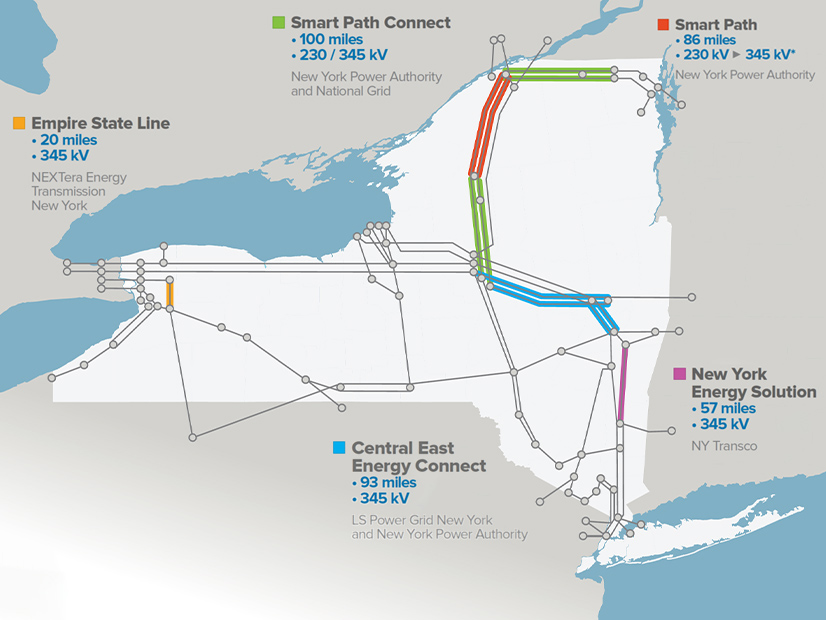
FERC on Friday rejected Niagara Mohawk Power’s proposed cost allocation and recovery for the utility’s share in the Smart Path Connect transmission project in upstate New York, including its request to increase its base return on equity (ROE) from 10.3% to 10.5% (ER22-1201-001).
The commission also denied the utility’s requests for a 50-basis-point adder to account for risks and incentives based on performance.
Niagara Mohawk is seeking to recover the $535 million in costs on the Smart Path Connect project, being built with the New York Power Authority (NYPA). The utilities estimate the total capital cost of the project at $1.2 billion, with an anticipated in-service date of December 2025. It would consist of rebuilding approximately 100 miles of 230-kV transmission lines to either 230 kV or 345 kV, along with associated substation construction and upgrades that, together with other projects currently under construction in New York, would establish a continuous 345-kV transmission path from northern New York to the downstate region to mitigate current and projected congestion.
FERC rejected the proposal as conflicting with a commission-approved 2015 transmission service charge (TSC) settlement with the New York Association of Public Power that set the utility’s ROE at 10.3% (EL14-29).
“Niagara Mohawk voluntarily entered into the 2015 TSC ROE settlement, in which it agreed to a 10.3% ROE for all of its transmission facilities, inclusive of any incentive adders,” FERC said. “Niagara Mohawk points to nothing in the [settlement] to suggest that the ROE established there applies only to either then-existing transmission facilities or transmission facilities that primarily have certain types of benefits. We find that, in the absence of any such language, the ROE established in the [settlement] should apply to all of Niagara Mohawk’s transmission facilities, including its going-forward investments.”

